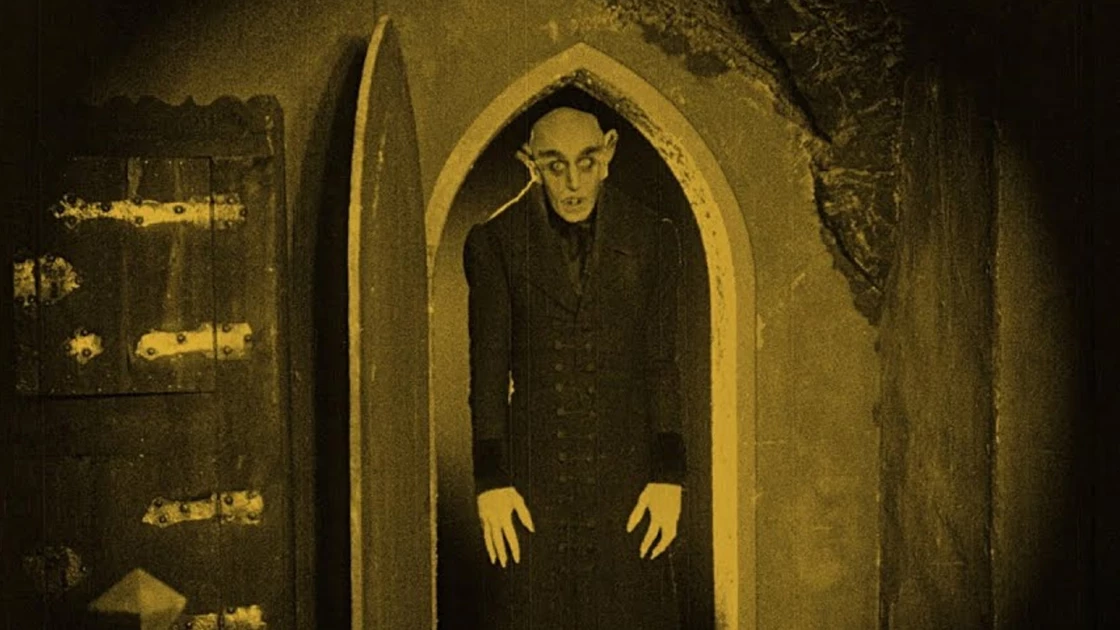
Unveiling The Shadows: Robert Eggers Explores The Timeless Legacy Of ‘Nosferatu’
Robert Eggers, the acclaimed director behind “The Witch” and “The Lighthouse,” has unveiled his latest cinematic masterpiece, “Nosferatu,” a haunting and visually stunning reimagining of F. W. Murnau’s 1922 silent film classic.
Exploring the Timeless Appeal of ‘Nosferatu’
“Nosferatu” is a tale of love, loss, and the horrors that lurk in the shadows. The film follows Thomas Hutter, a young real estate agent who travels to Transylvania to meet Count Orlok, a mysterious client who wishes to purchase a house in Germany. Unbeknownst to Thomas, Orlok is a vampire, and his arrival brings terror and devastation to the unsuspecting town.
The appeal of “Nosferatu” lies in its timeless themes and its ability to evoke both fear and empathy. The film’s depiction of isolation, loneliness, and the fragility of human life resonates with audiences on a deep level. Moreover, the character of Count Orlok, with his haunting appearance and predatory nature, has become an iconic figure in horror cinema.
Eggers’ Unique Interpretation
In his reimagining, Eggers brings his signature style of meticulous craftsmanship and atmospheric filmmaking to “Nosferatu.” The film is a visually stunning spectacle, with every frame carefully composed to create a sense of dread and unease. Eggers also incorporates elements of folklore and mythology, giving the story a timeless and mythic quality.
One of the most striking changes in Eggers’ version is the portrayal of Count Orlok. While Murnau’s Orlok was a grotesque and terrifying creature, Eggers’ Orlok is more sympathetic and complex. Willem Dafoe’s brilliant performance captures the character’s loneliness and desperation, making him a tragic figure as well as a monster.
Critical Reception and Interpretation
“Nosferatu” has been met with critical acclaim, with many critics praising Eggers’ masterful storytelling and the film’s stunning visuals. However, the film has also sparked some controversy due to its slow pacing and unconventional narrative structure.
Some critics have argued that Eggers’ version is too faithful to the original, lacking the freshness and innovation found in his previous films. Others have praised the film’s deliberate pace, which allows the audience to fully immerse themselves in the atmosphere and the characters’ emotional journeys.
A Deeper Exploration: Different Perspectives on ‘Nosferatu’
The critical reception of “Nosferatu” highlights the different perspectives and interpretations that can exist around a single work of art.
Those who appreciate the film’s faithfulness to the original argue that Eggers has preserved the timeless essence of Murnau’s masterpiece while updating it for a modern audience.
Those who prefer a more innovative approach contend that Eggers could have taken more creative liberties and explored new themes or narrative possibilities.
Others emphasize the film’s emotional impact, praising Eggers for creating a haunting and unforgettable cinematic experience.
Reflection on the Broader Implications
The release of “Nosferatu” reignites the debate about the nature of remakes and the importance of preserving cinematic heritage. Eggers’ film demonstrates that classic stories can be reimagined for new generations while still honoring their original spirit.
Moreover, the film’s exploration of isolation, loneliness, and the human condition has a profound resonance in our contemporary world. “Nosferatu” serves as a reminder of the timeless power of cinema to reflect our fears, desires, and the enduring human experience.
Conclusion: A Legacy Reborn
Robert Eggers’ “Nosferatu” is a remarkable achievement, both as a reimagining of a cinematic classic and as a standalone work of art. Eggers’ meticulous attention to detail, his atmospheric filmmaking style, and his thought-provoking interpretation have created a film that is both haunting and beautiful.
Whether you are a fan of the original or a newcomer to the story, “Nosferatu” is a must-see cinematic experience. It is a film that will stay with you long after the credits roll, a testament to the enduring power of great storytelling and the transformative nature of cinema.
